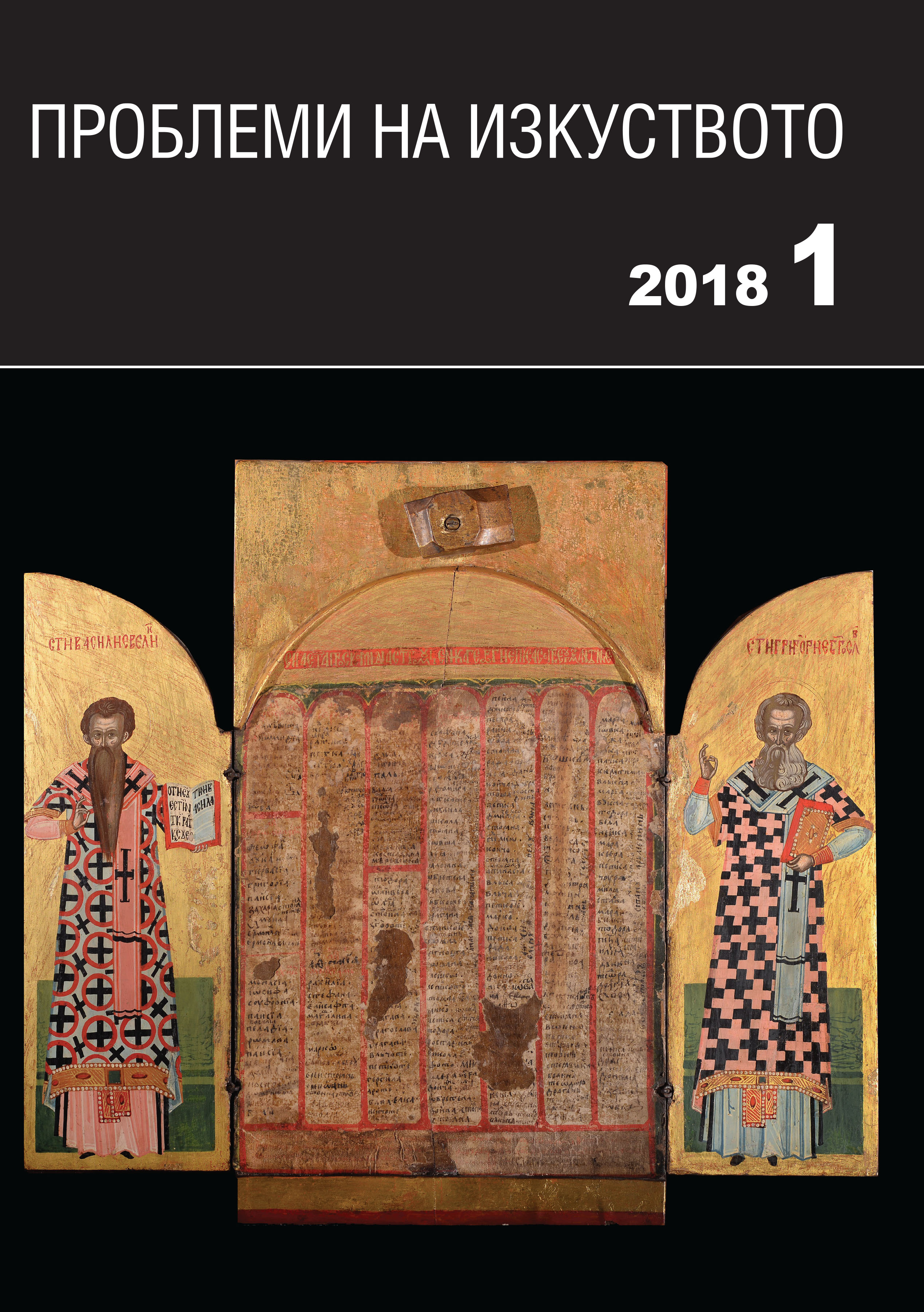Църквата „Успение Богородично” в Зерват, Албания
The Church of the Assumption in Zervat, Albania
Author(s): Maria KolushevaSubject(s): History, Fine Arts / Performing Arts, Visual Arts, Theology and Religion, 17th Century
Published by: Институт за изследване на изкуствата, Българска академия на науките
Summary/Abstract: The article presents a church in the area of Northern Epirus, today’s Southern Albania that is little known in the literature. The church was built in several stages as the year of 1582/3 written on the western façade should be accepted as the final date of its erection. The ktetor’s inscription in the naos witnesses the year when the murals were laid, the year of 1605/6, as all residents of the village contributed to the paintings. The frescoes in both the naos and the narthex were made then. The two icon-painters, Mihail and Nikola, left their names in the inscription. Today there are no icons preserved in the church because they were stolen in 2010. We draw information about them from photographs in several publications. On almost all images there are partial upper layers of painting which were not removed upon the restoration of the frescoes. The program of the mural ensemble is preserved in its entirety and presents an extremely rich iconographic repertory. There are numerous scenes from different cycles: of the Great Feasts, the Passion, the Post-Resurrection appearances of Christ, the Acts and the Miracles of Christ, scenes dedicated to the Holy Mother of God, Old Testament episodes, and others. The murals have been attributed by a number of Greek authors to the famous icon-painter Mihail of Linotopi. The identity of the second icon-painter, Nikola, has not been commented on save for the study of T. Tsambouras. The author thinks his paintings are close to the Linotopi studio and attributes to him several icons originating from the church itself and from other churches in Northern Greece. Getting familiar with the murals on the site allowed us to make some important observations, which give a new meaning to the suggestions made so far. Probably the frescoes were laid in two stages. The work was assigned to two icon-painting teams led by two masters. One of them worked in the entire altar section, the eastern transept and the eastern section of the central aisle. The other one painted the central and the western parts of the three aisles as well as all murals in the narthex. The boundary between the two areas of work is easily noticeable and can be traced out in the bottom two registers of the naos. The differences in the two parts are both stylistic and paleographic. The participation of Mihail of Linotopi as the chief icon-painter as suggested by some researchers, is not confirmed. Probably he participated as an assistant to the chief master who worked in the western part of the naos and in the narthex. The person who led the mural painting work in the altar and in the eastern part of the naos may be identified as one of the masters who did the frescoes in Dobarsko and in the Seslavtsi Monastery.
Journal: Проблеми на изкуството
- Issue Year: 2018
- Issue No: 1
- Page Range: 59-74
- Page Count: 16
- Language: Bulgarian
- Content File-PDF

